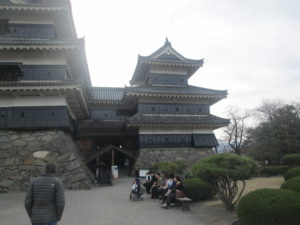
_________________________________________________________________________________________
Matsumoto: From this website:
A castle town, Matsumoto possesses one of the best-preserved feudal structures in the country, and maintains its historical attractions and traditions while simultaneously exuding a modern, cosmopolitan charm. Folk museums and ancient temples complement the atmosphere established by the castle, backed up by the picturesque views of the Japanese Alps available throughout the city. Eateries both modern and traditional serve “soba” (buckwheat noodles) dishes, for which Matsumoto has become known. “Onsen” (traditional Japanese spas) dot the landscape surrounding the town, and represent some of the main focal points for hikes during Matsumoto holidays.
Matsumoto Castle, Matsumoto: From this website:
Visit the 16th century complex of Matsumoto Castle, one of Japan’s most renowned landmarks, nicknamed “Crow Castle” because of its dark facade. Admire the imposing structure, the oldest castle remaining in Japan, notable for occupying a spot on a plain rather than the more usual hilltop. As you step inside the main building, you’ll notice that the interior features authentic wooden pillars and staircases, while the second floor contains a collection of guns. Climb to the top of the main keep for panoramic views of the surroundings. To visit Matsumoto Castle on your trip to Matsumoto, use our Matsumoto tourist route planner.
_______________________________________________________________________________________________
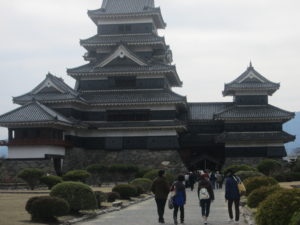
__________________________________________________________________________________________________________________
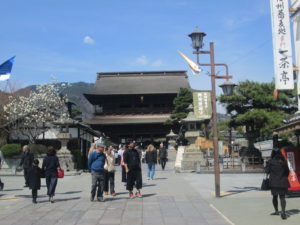
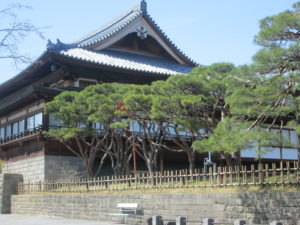
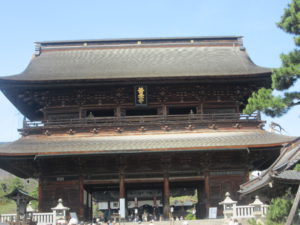
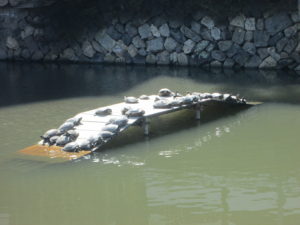
A little wooden bridge emerging out of the first moat
covered in resting freshwater turtles.
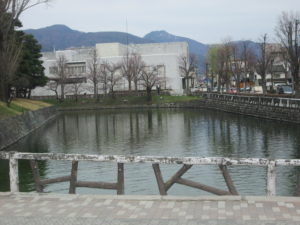
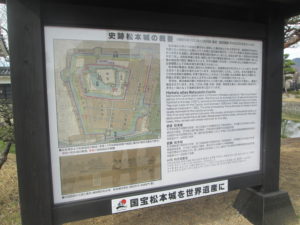
The Written Sign Below Says: Historic Sites … Matsumoto Castle:
dates back to the early Sengoku period or “Warring States” period of civil unrest in Japan. Starting out as a simple fort, it was enlarged and fortified in the late 1500’s, becoming the impressive fortification as we know today.
The main keep of the castle, built between 1593and 1594, was designated a national treasure in 1952. The area enclosed by the outermost moat of three original moats represent the castle grounds.
The first and second enclosures, the moats and part of the earthworks of Matsumoto Castle, have all been designated historical sites along the main keep, remain well preserved even to this day.

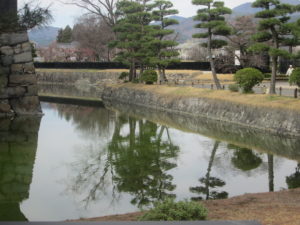
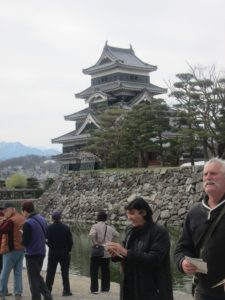
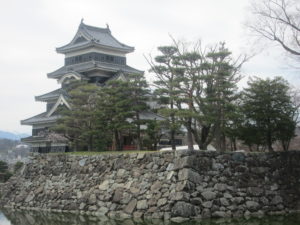
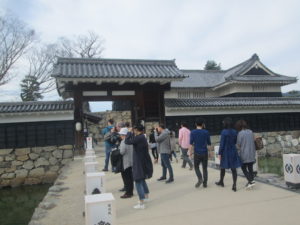
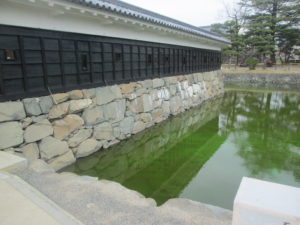
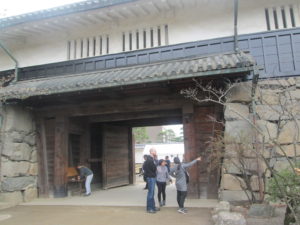
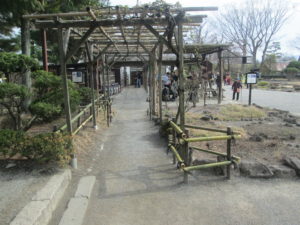
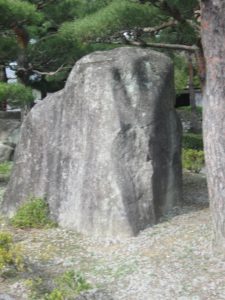
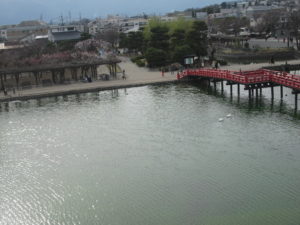
A red footbridge crosses over the the first moat to the other side.
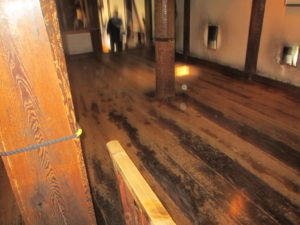
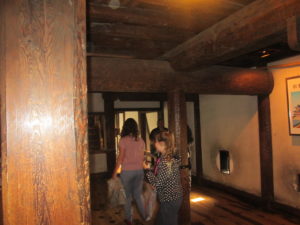
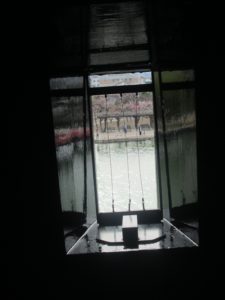
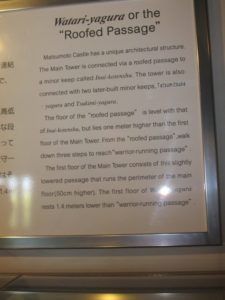
The Written Sign Above Says:
Yazama & Teppozama: Each floor is fitted with holes for firing weapons. The long rectangular holes are called “Yazama” for shooting arrows at the enemy. The square ones are called “Teppozama” were for firing muskets. Prior to the introduction of firearms from Europe, only the Yazama were used in castle construction. After the introduction of firearms, Yazama & Teppozama were used in combination.
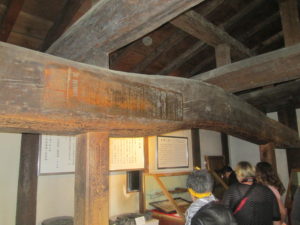
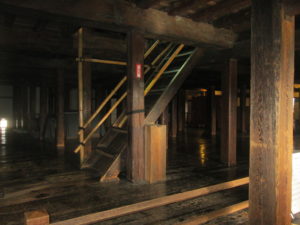
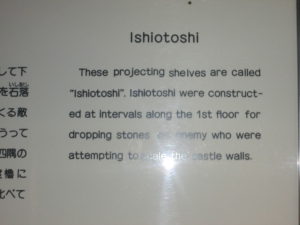

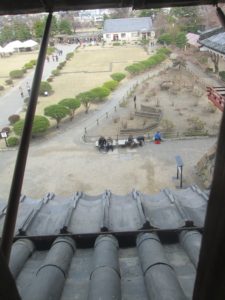
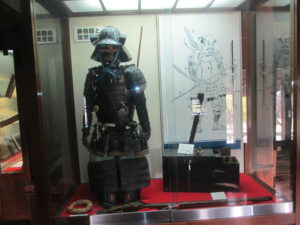
….. The weapons used in the castle for defense ….
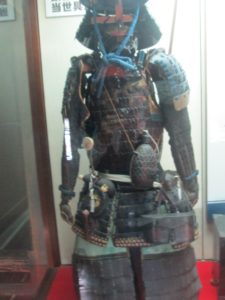
…. The armour as used in the castle for defense ….
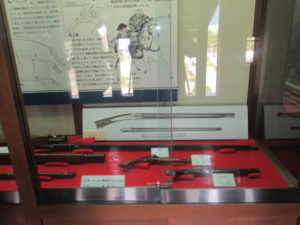
…. A demonstration of very early muskets for firing through the square holes are called “Teppozama” were for firing muskets. As said above: Each floor is fitted with holes for firing weapons. The long rectangular holes are called “Yazama” for shooting arrows at he enemy. The square ones are called “Teppozama” were for firing muskets. Prior to the introduction of firearms from Europe, only the Yazama were used in castle construction. After the introduction of firearms, Yazama & Teppozama were used in combination.
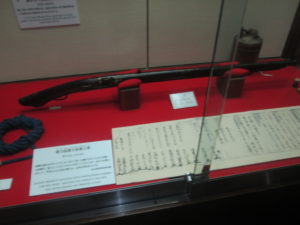
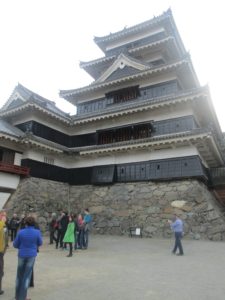
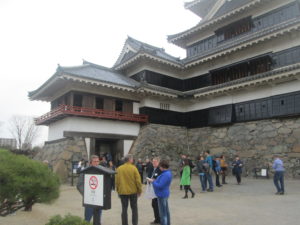
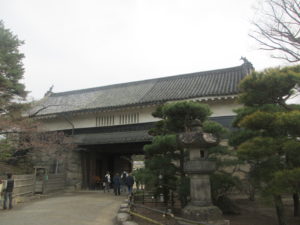
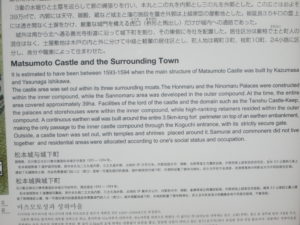
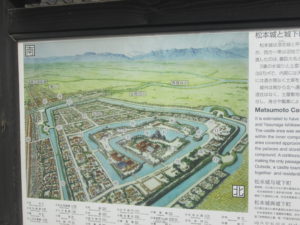
The Written Sign above Says: Matsumoto Castle and the Surrounding Town:
It is estimated to have been between1593 – 1594 when the main structure of Matsumoto Castle was built by Kasumasa Yasungaga Ishikawa. The castle area was set within its three surrounding moats. The Honmaru and the Ninomaru Palaces were constructed within the inner compound, while the Sannomanu area was developed in the outer courtyard compound. At the time, the entire area covered 30 ha. Facilities for the lord of the castle and the domain such as the Tenshu Castle, the Keep, the Palaces and storehouses, were within the inner compound
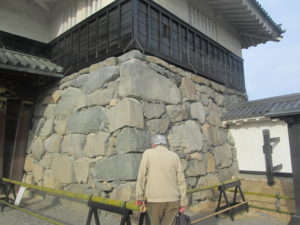
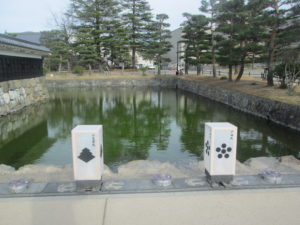
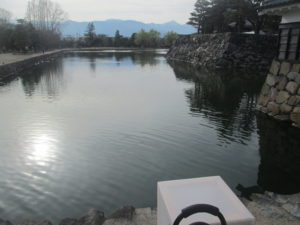
_________________________________________________________________________
